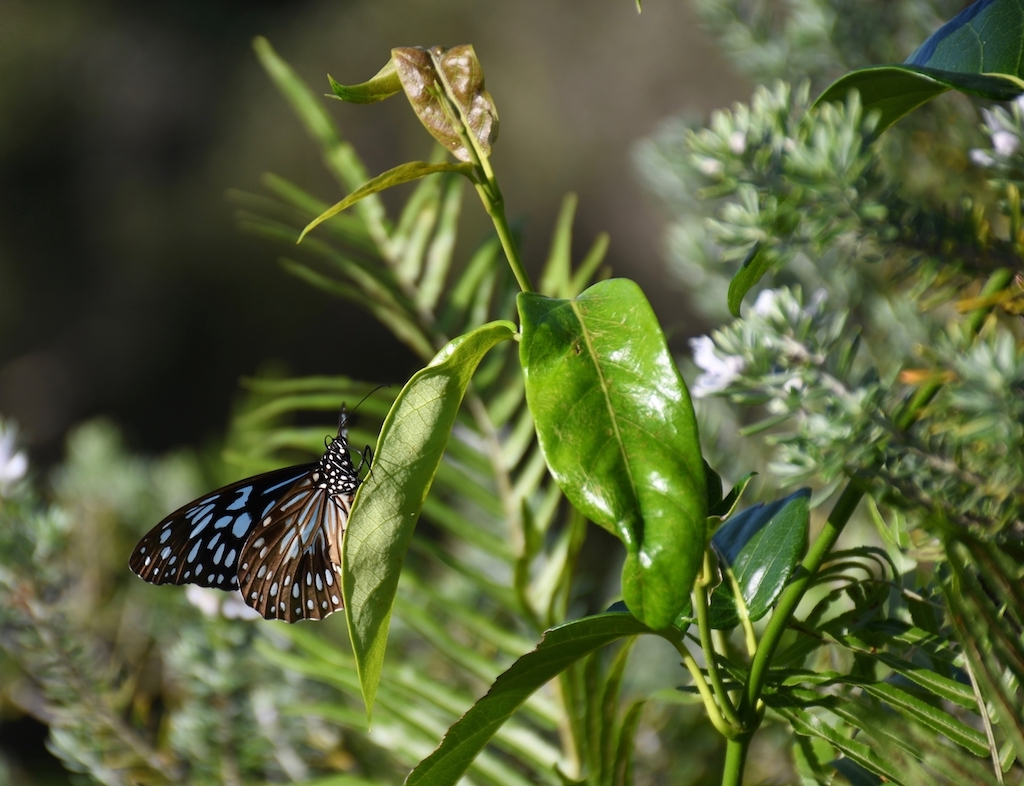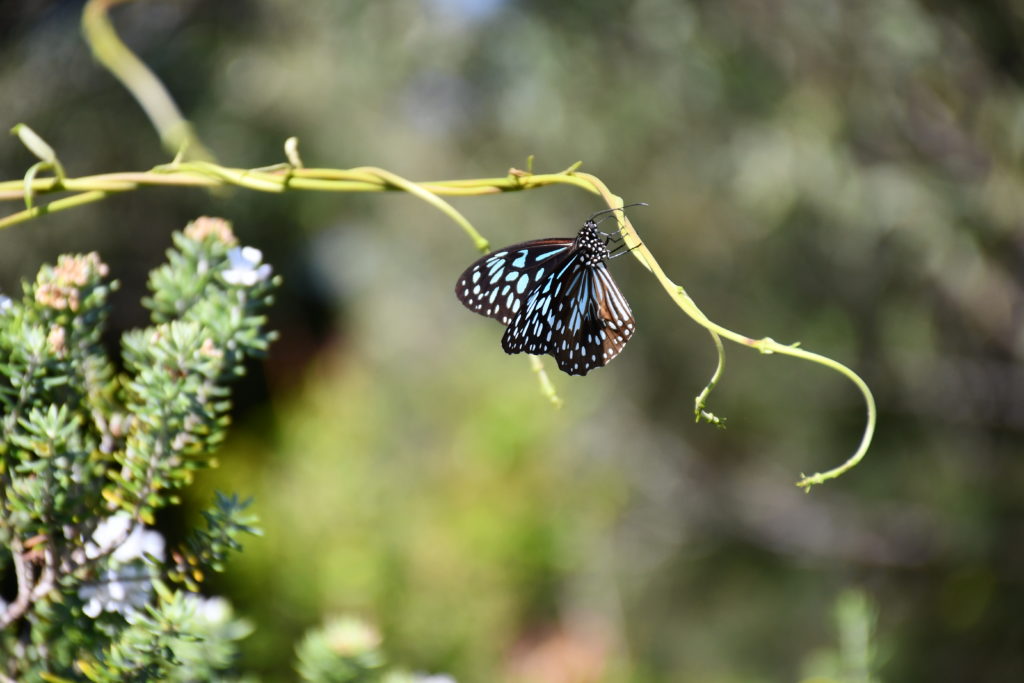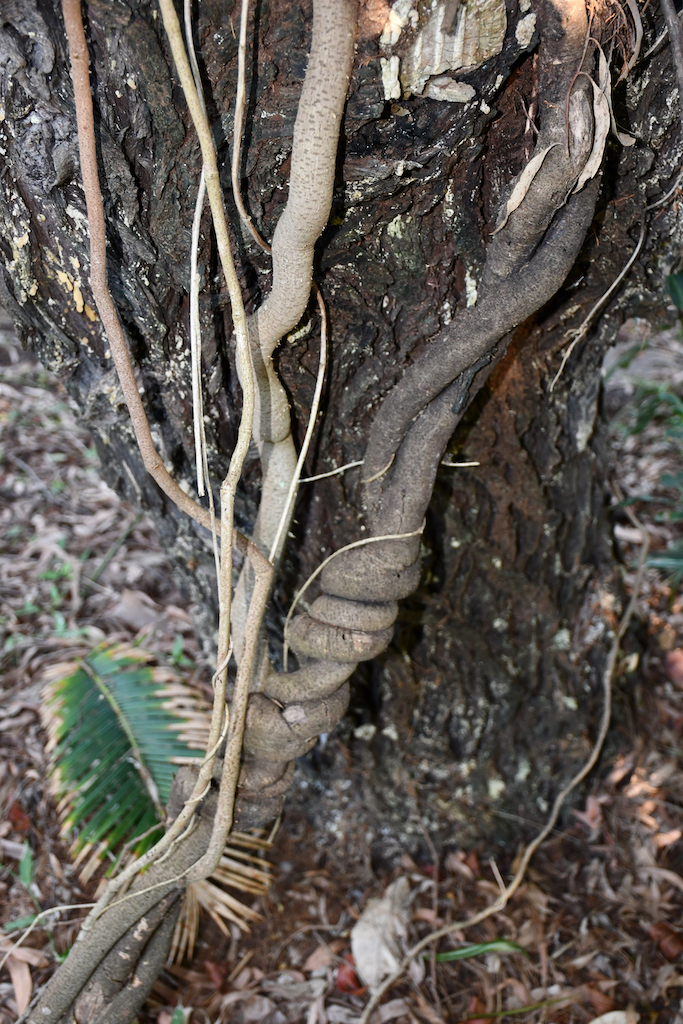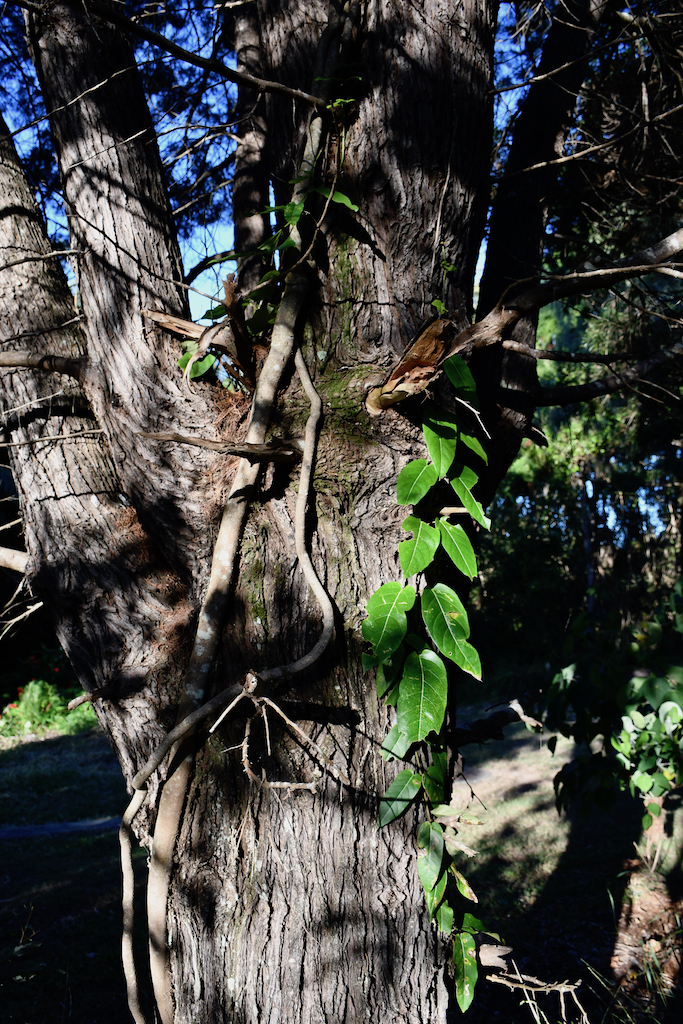
Parsonsia straminea – MONKEY ROPE VINE
Pronounced par-SONS-ee-ah stram-ee-NEE-ah, it is a vigourous woody vine that climbs by twining stems and adventitious roots. The main stem can be up to 9 cm in diameter and eventually, the attractive green leaves which are up to 24cm long, grow high up in the canopy. Small fragrant pale yellow tubular flower clusters are produced through spring, summer and autumn.
The vine provides nectar for the Blue Tiger Butterfly, Swamp Tiger, Varied Eggfly, Blue Triangle, and Varied Dusky-blue. It also provides Butterfly laval food for the Lesser Wanderer and Common Crow Butterflies, and food for native bees and wasps.*

Parsonsia straminea is an excellent choice for attracting butterflies and native bees in your garden. It could be used to cover a fence or a bank but has the potential to smother plants, so needs to be kept in check. If you use a tree as its support and the vine gets too heavy, it is easy to remove by cutting through the main stem. Propagation is by cutting or layering.
*Source: Noosa Native Plants


